Tag Archives Beef Cattle Research Council

Prof receives cattle research award
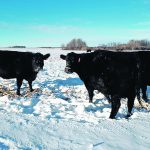
High moisture corn shows promise
A study from the University of Saskatchewan finds that lower heat unit corn could displace some barley in feed rations
Glacier FarmMedia – A University of Saskatchewan study has found encouraging results from feeding high moisture corn to finishing cattle. It also identified corn “snaplage” as a potential fill-in for barley grain and silage diets. The project saw researchers replace a portion of barley with high moisture corn (HMC) in finishing diets. The latter revealed […] Read more
Graze alfalfa without the fear of bloating
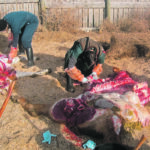
‘Telepathology’ unites vets and specialists
Post-mortem investigations can suffer without pathologists input because they provide specialization and expertise
Glacier FarmMedia – Televised necropsies may be the next big thing in determining causes of death in cattle and other livestock, according to results of a proof-of-concept research project. Using video conferencing technology, researchers with the University of Calgary Faculty of Veterinary Medicine found that connecting specialized pathologists with in-the-field large animal veterinarians in real […] Read more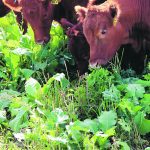
Including cattle on cropland didn’t help soil health
Saskatchewan and Manitoba research finds soil benefits from cover crops, but grazing them doesn’t really move the needle
Glacier FarmMedia – Annual cover crops have another research receipt to support their purported soil health benefits. But while those mixes can help cattle producers graze longer or recover some of the establishment cost by feeding livestock, cattle activity might not magnify soil health gains as much as many would hope. The research comes from […] Read more
Study shifts water nutrient load responsibility
New U of M research finds that soil and vegetation may play a larger role in excess nutrient runoff than livestock manure
Glacier FarmMedia – A new study spearheaded by two University of Manitoba researchers is giving more insight into where nutrients running off into Prairie waterways are coming from, and pasture manure may not be the biggest culprit. The study, led by soil scientist David Lobb and Marcos Cordeiro of the department of animal science, sought […] Read more
Antibiotic resistance rare in weaned calves
Western Canadian research study finds resistance in only two per cent of the weaned calves that were sampled
Glacier FarmMedia – If a new piece of western Canadian research is any indication, few weaned calves ready for the feedlot are carrying medication-resistant passengers. The project was focused on bacteria and viruses that can contribute to bovine respiratory disease (BRD). It found antimicrobial resistance (AMR) in just two per cent of sampled calves from […] Read more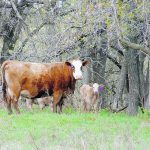
Cattle sector aims to break the cycle
Open rates were horrendous in Western Canada last fall: what can producers do to make sure history doesn’t repeat itself?
Glacier FarmMedia – Many beef producers got an unpleasant shock at last fall’s preg check, and experts are weighing in on what can be done to avoid a similar problem this year. According to a report from the Western Canadian Animal Health Network (WeCAHN), more than 40 per cent of some herds were found open. […] Read more
New forage barley variety promises improved yields
AB Maximizer, a relatively new variety developed by Western Crop Innovations, also promises better disease resistance
WINNIPEG — Field tests across the Prairies have identified a new star in the world of forage barley: AB Maximizer. Results show the new variety has higher yields and stronger disease resistance and matures earlier than established varieties like CDC Cowboy. AB Maximizer is a relatively new variety developed by Western Crop Innovations, formerly known […] Read more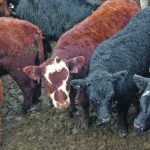
Respiratory disease linked to the gut
Scientists try to find out if giving calves a probiotic before they enter the feedlot will prevent bovine respiratory disease
WINNIPEG — Over the last decade, scientists and doctors have established a connection between gut health and brain health. They’re realizing that the community of bacteria within the intestine can influence mood, cognition, behaviour and other things that are normally associated with the brain. “The gut-brain connection is complex and bi-directional,” says the Cleveland Clinic […] Read more




